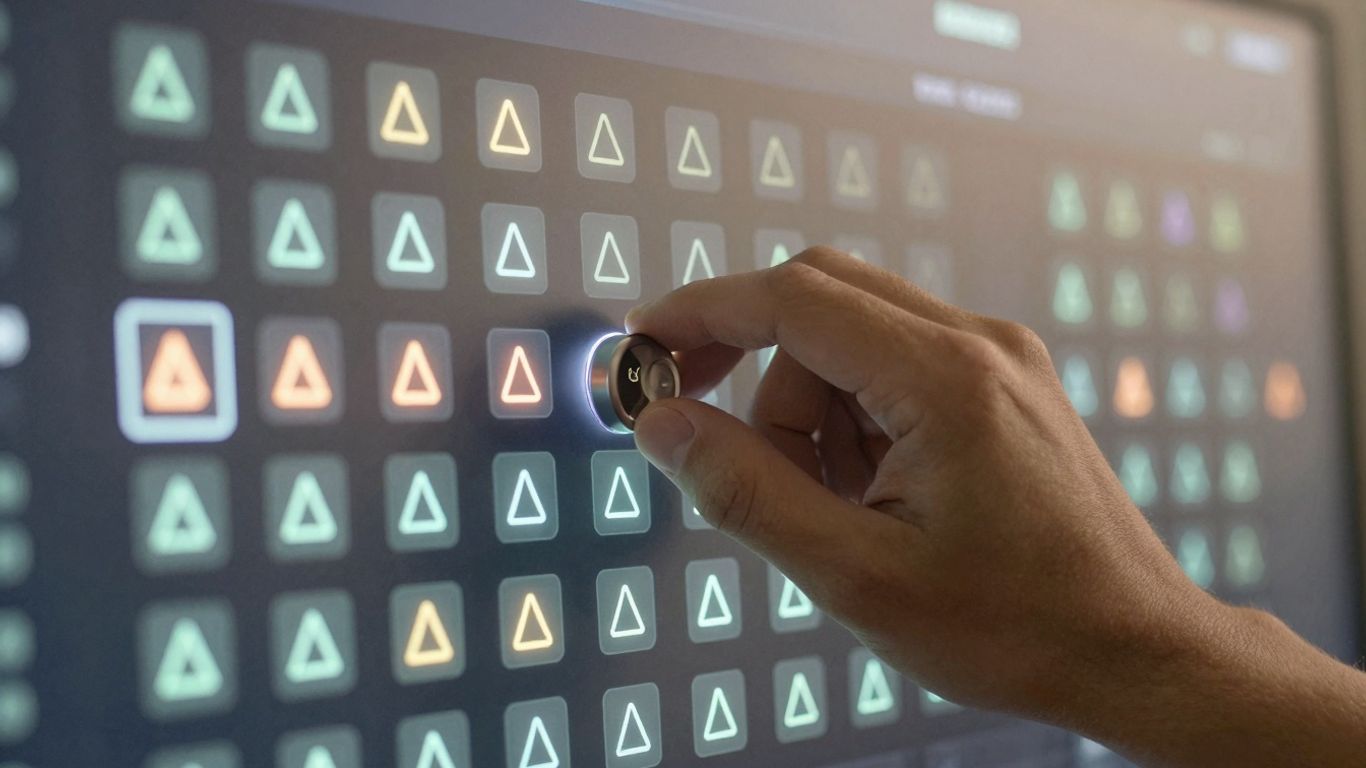[ newsletter ]
Stay ahead of Web3 threats—subscribe to our newsletter for the latest in blockchain security insights and updates.
Thank you! Your submission has been received!
Oops! Something went wrong. Please try again.
Explore cost analysis of manual vs automated contract audits, balancing efficiency and security.





Smart contracts are like digital agreements that run on their own, but they need to be checked to make sure they're safe. There are two main ways to do this: manual audits, where people read through the code, and automated audits, which use software to find problems. Each method has its pros and cons, and they cost different amounts. Let's break down what makes them different, especially when it comes to price.

Smart contract audits are like a safety net for the blockchain world. They are a thorough examination of a smart contract's code to spot any potential security issues or bugs before they can be exploited. Think of it as a smart contract security audit that helps ensure these digital agreements work as they should, keeping your digital assets safe from hackers. Auditors dig deep into the code, looking for vulnerabilities that could cause big problems if left unchecked.
In the blockchain universe, where transactions are irreversible and decentralized, ensuring the security of smart contracts is absolutely essential. Audits help prevent financial losses by catching errors early, minimizing security threats, and maintaining trust among users. Without proper auditing, smart contracts can become targets for malicious attacks, leading to significant financial damage. By conducting regular audits, organizations can avoid these pitfalls and keep their systems secure.
Smart contracts, while powerful, are not without their flaws. Some common vulnerabilities include:
These vulnerabilities highlight the need for comprehensive audits to ensure smart contracts are robust and secure. By identifying and addressing these issues, audits not only protect the contract itself but also build trust among its users.

Manual auditing of smart contracts is like being a detective in the digital world. Auditors roll up their sleeves and dig into the code line by line. They don't just rely on automated tools; they use their skills to find hidden bugs and vulnerabilities. This process often involves reviewing the logic behind the code, checking for potential security loopholes, and ensuring that the smart contract meets its intended purpose. It's a meticulous task that demands a keen eye and a deep understanding of blockchain technology.
Manual auditing isn't all sunshine and rainbows. It's time-consuming and can be quite expensive. Auditors need to be highly skilled, which means they don't come cheap. Plus, as the complexity of the smart contract increases, the difficulty of the audit grows too. There's also the human factor—people can make mistakes. Balancing thoroughness with speed is a constant challenge.
Manual audits are essential for ensuring the security and functionality of smart contracts, but they require a significant investment of time and resources. Balancing these factors is key to a successful audit.
Automated smart contract audits are like having a super-speedy assistant that never gets tired. These tools scan through code to find common mistakes and security holes. They use algorithms to spot things like reentrancy bugs or overflow errors, which are common in smart contracts. Automated tools can quickly identify these issues and provide a first layer of defense. However, they don't understand the intent behind the code, which can lead to false positives or missed subtle errors.
Automated audits bring a lot of perks to the table:
In the AI-driven smart contract auditing services, these benefits are further enhanced by the precision and efficiency that AI brings, offering a revolutionary solution to the limitations of human-based audits.
But, of course, they're not perfect. Automated audits have their downsides:
Automated audits are a great starting point, but they shouldn't be the only line of defense. Combining them with manual reviews can provide a more comprehensive security check. This hybrid approach balances the strengths and weaknesses of both methods, ensuring a more secure smart contract deployment.
The complexity and size of a smart contract can significantly influence the cost of an audit. The more intricate and extensive the code, the higher the price tag. Let's break it down:
The need for detailed analysis, especially in complex systems, drives up the cost as auditors must meticulously check each component for vulnerabilities.
Time is money, and this is especially true in smart contract auditing. The duration of an audit can vary from a few days to several weeks, depending on the contract's complexity. Longer audits mean more resources are needed, which increases costs. Here's how it plays out:
Hiring a reputable auditing firm can also impact costs. Firms with a strong track record often charge more, but they bring expertise and a thorough approach to their work. Here's what to consider:
When planning your audit budget, consider these factors to ensure you get a thorough evaluation without overspending. Balancing cost with the need for a comprehensive audit is key to protecting your blockchain project.
For more insights on how these factors influence costs, check out this detailed analysis.
Manual audits are like the deep dive of smart contract reviews. They involve experts going line by line through the code, looking for anything that might go wrong. This method is thorough, but it takes time and expertise, which naturally drives up the cost. Top-tier auditing firms often charge a premium for manual audits because they employ seasoned professionals who know the ins and outs of blockchain technology. Here's a rough idea of what you might pay:
The complexity and size of the contract are big factors in determining the overall cost. Manual audits can take weeks, especially for advanced protocols that need several iterations of review.
Automated audits use software tools to scan the code for common vulnerabilities. These tools are fast and generally cheaper than manual audits, but they might miss more complex issues. Automated tools like MythX and Slither can quickly flag problems like reentrancy attacks or integer overflows. Here’s a quick cost breakdown:
While automated audits are less expensive, they often serve as a preliminary step before a more detailed manual review.
Finding the right balance between cost and security is key. You don't want to skimp on security just to save a few bucks, but you also don't want to overspend unnecessarily. Many projects opt for a combination of both manual and automated audits to get the best of both worlds. This approach can help identify most vulnerabilities while keeping costs in check.
Smart contract audits are an investment in security. While the cost might seem high, consider the potential losses from a security breach. It's about protecting your project and your users.
When choosing between manual and automated audits, consider the complexity of your contract, your budget, and the level of security you need. In some cases, a detailed analysis by a top auditing firm might be worth the extra cost, especially if your project involves significant financial transactions or sensitive data.
When it comes to trimming down the expenses of smart contract audits, there are several tactics you can employ. First off, understanding the complexity and scope of your project can help you select the most appropriate audit type. Here are some strategies to consider:
It's not just about cutting costs but ensuring your contract is secure without breaking the bank. By balancing manual and automated audits, you can achieve a comprehensive review at a lower price.
Choosing between manual and automated audits depends on your project's needs. Manual audits are thorough but costly, while automated audits are quick and cheaper. Here's a quick comparison:
For complex projects, a hybrid approach might be the best fit, combining the strengths of both methods to ensure a robust audit.
Before settling on an auditing firm, it's crucial to evaluate their proposals carefully. Consider the following:
Taking these factors into account can help you choose an audit that fits both your security needs and budget constraints. Remember, a well-audited smart contract can save you from potential financial losses in the long run.
The landscape of smart contract auditing is shifting rapidly with technological advancements. Automated tools are becoming more sophisticated, allowing for quicker and more comprehensive checks. These tools can scan large volumes of code in a fraction of the time it would take a human auditor. The rise of AI in auditing means more accurate detection of vulnerabilities, reducing human error and oversight. However, it’s not just about speed; these tools are also learning to understand context, which is crucial in identifying complex security flaws.
AI is not just speeding things up; it’s changing the game entirely. By integrating AI, audits can now predict potential vulnerabilities before they become actual threats. This predictive capability is a huge leap forward, enabling proactive security measures. AI can sift through historical data to identify patterns and anomalies, offering insights that were previously unimaginable. This collaboration between AI and human auditors enhances blockchain security, improving both speed and accuracy.
Looking ahead, the future of smart contract auditing will face both challenges and opportunities. One major challenge is keeping up with the rapid pace of blockchain innovation. As new platforms and technologies emerge, auditors must continuously update their knowledge and tools. On the flip side, these advancements also present opportunities for more robust security protocols and innovative auditing techniques. The key will be balancing automation with human expertise, ensuring that audits remain thorough and reliable.
As we move forward, the synergy between AI tools and human expertise will define the next era of smart contract auditing. This blend promises not only enhanced security but also the flexibility to adapt to new challenges in the blockchain world.
So, what's the bottom line on manual versus automated smart contract audits? Well, it really boils down to what you're looking for. Automated tools are great for a quick, cost-effective check. They can catch a lot of the common issues without breaking the bank. But, if you're dealing with something complex or high-stakes, manual audits are where it's at. Sure, they cost more and take longer, but they bring a level of detail and expertise that machines just can't match. It's like comparing a quick car wash to a full detail service. Both have their place, but one digs a lot deeper. At the end of the day, it's about balancing cost with the level of security you need. Choose wisely, because in the world of smart contracts, a little extra spent on security can save you a whole lot of trouble down the line.
A smart contract audit is a careful check of a smart contract's code to find and fix any mistakes or security issues before it goes live on the blockchain.
Auditing is crucial because it helps ensure that smart contracts work correctly and securely, protecting digital assets from hacks and errors.
Common issues include bugs in the code, security vulnerabilities like reentrancy attacks, and logic errors that can be exploited.
In manual audits, experts review the code line by line to find errors that automated tools might miss, ensuring a thorough check of the contract.
Automated tools quickly scan the code for known vulnerabilities, saving time and reducing costs, but they might miss complex issues.
Costs can be lowered by choosing the right audit type, using a mix of manual and automated methods, and comparing different audit proposals.


